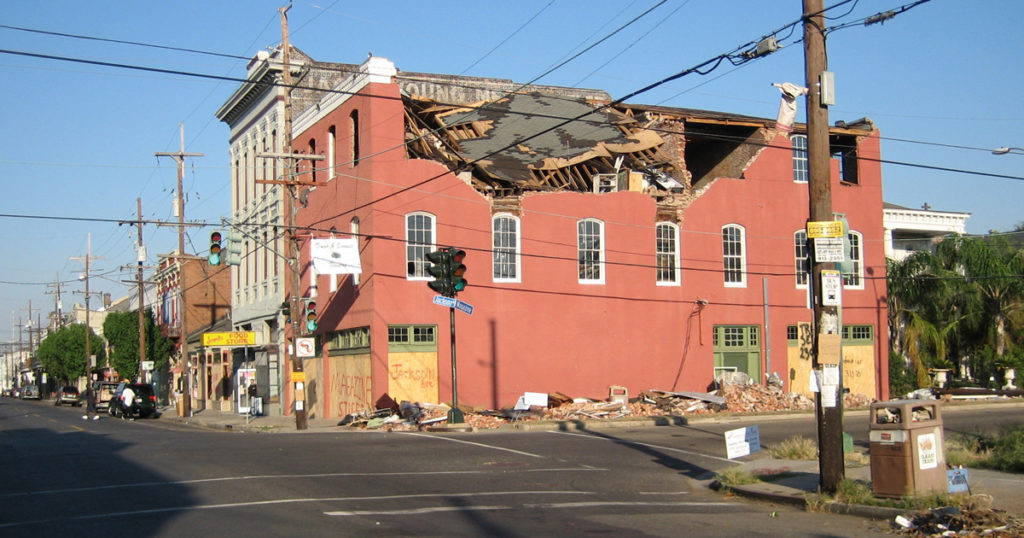In Katrina’s Wake
When Hurricane Katrina roared ashore on August 28, 2005, with 125 mph winds and 30-foot storm surges, it was Mississippi, not Louisiana, at ground zero. Plowing up the western half of the state, the tempest devastated town after town, leaving $30 billion of damage in its wake.
But while other studies after Katrina focused exclusively on the businesses that survived, Holly Schrank, Sandra Sydnor, and Maria Marshall (pictured left to right) also wondered about the ones that didn’t. Traveling a 10-county region several years after the hurricane, they cross- referenced business names from public records, and then hired the University of Wisconsin Survey Center to conduct telephone interviews of business owners. A total of 499 owners with either demised or operating businesses provided telephone responses.

Not surprisingly, businesses that ceased operations immediately were more likely to have experienced catastrophic building damage or a loss of inventory, crops, equipment or employees. However, businesses that reopened but eventually closed told a different story: weakened by exogenous shocks such as Katrina and the Deepwater Horizon oil spill in 2010, they were hit by endogenous factors as well, such as operational inefficiencies and cash-flow problems. “We call these cascading events, a series of smaller events that bring businesses to their knees,” says Schrank, a professor emeritus of the Division of Consumer Science in the College of Health and Human Sciences.
It’s easy to think that survival equates with recovery, says Marshall, a professor of agricultural economics and director of the Purdue Initiative for Family Firms. “But even some businesses operating up to a decade later were only open by the skin of their teeth,” she says.
While contributing to the growing body of resilience literature, the team’s framework expands on the idea of survival and demise, opening up the opportunity to really understand how both can take multiple paths — or occur in multiple ways — says Sydnor, associate professor of hospitality and tourism management.
The research was supported by the National Science Foundation’s Civil, Mechanical and Manufacturing Innovation program and the USDA National Institute of Food and Agriculture.
Originally published in Purdue University’s 2017-18 Executive Vice President for Research and Partnerships annual report / Photo by Vincent Walter